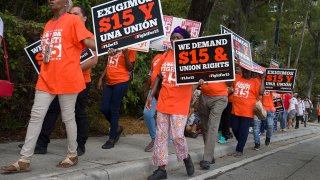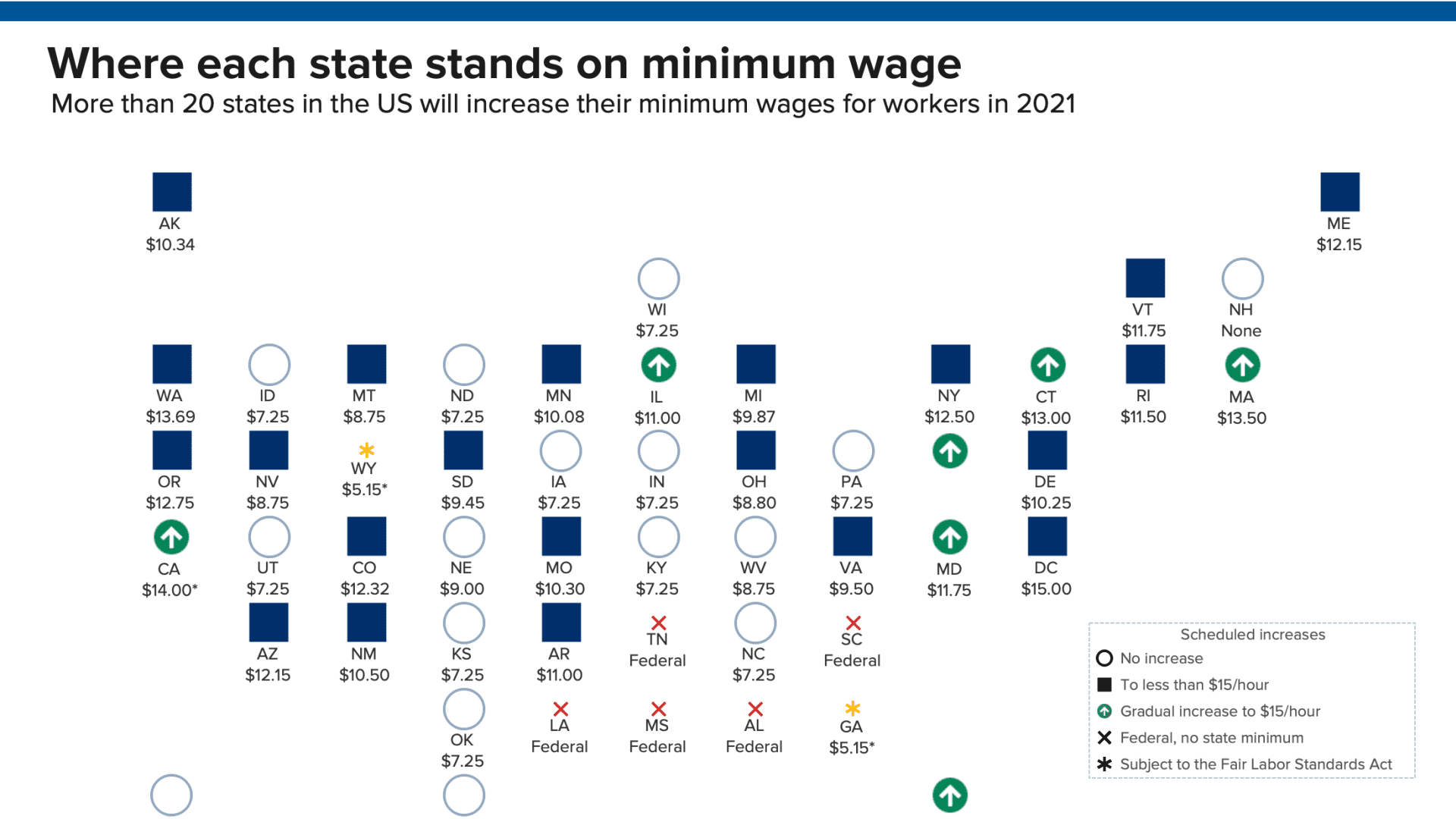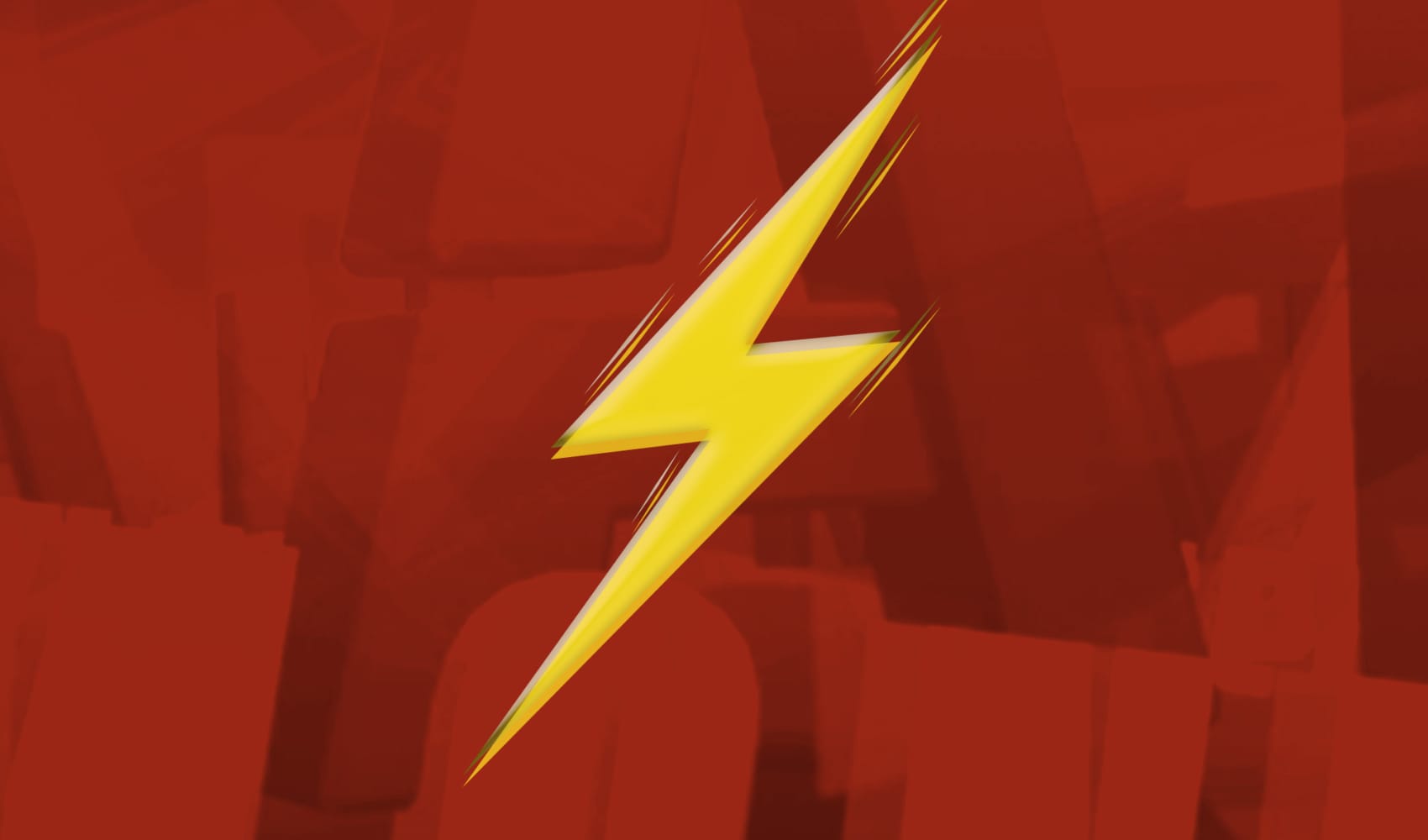
Millions of workers in the U.S. could be in for a pay raise as Democrats move to pass a $15 federal minimum wage without Republican support.
Both President Joe Biden's American Rescue Plan and the recently reintroduced Raise the Wage Act would gradually lift the federal minimum wage to $15 from $7.25, where it's been since 2009. The Raise the Wage Act offers the following timeline: The federal minimum wage would jump to $9.50 this year and reach $15 an hour by 2025. After that, it would be indexed to median wages.
The jump would give nearly 32 million American workers a raise, according to the Economic Policy Institute, a left-leaning research group. A 2019 report from the Congressional Budget Office showed about 27 million Americans could see increased wages, and 1.3 million would be lifted out of poverty.
"There ain't nobody in America — not in the North, the South, the East or the West — who can survive on $7.25 an hour," said Sen. Bernie Sanders, I-Vt., on a Jan. 26 call with reporters.
Workers in some states would see a bigger increase
Workers in states with the lowest local wages, or that use the federal minimum wage, could see some of the largest jumps in pay.
That includes workers in 17 states that use the federal minimum wage or have set their local minimum wage at the same amount, and a small number of people in Wyoming and Georgia who make the state minimum wage of $5.15. This is only for employers that aren't subject to the Fair Labor Standards Act, which means that most workers in these states get the federal minimum wage of $7.25 per hour.

Workers in states with local minimum wages above the federal level, such as Montana, Nebraska, Nevada and Ohio, which all have state minimum wages between $8 and $9, would see a smaller increase this year.
Money Report
Others may not see an increase at all, or wouldn't see one for a few years. That includes those in states that already have minimum wages that are much higher than the federal level, such as Washington, where the minimum wage is $13.69; California, where it's generally $14; and New York, where it's $12.50, to name a few.
Tipped and disabled workers would get a boost
Tipped workers, typically seen in the restaurant industry, would be among the biggest winners of current legislation to pass a $15 federal minimum wage. Disabled workers, who are often legally paid less than the federal minimum wage, would also see an increase.
Beyond boosting the federal minimum wage, the Raise the Wage Act would gradually eliminate the tipped minimum wage. If passed, the act would move the tipped minimum wage this year to $4.95 an hour from $2.13 and it would increase by about $2 per hour until 2025. From there, it would be the same as the federal minimum wage.
"What we know is that the higher the wage, the less dependent workers are on tips and therefore the less vulnerable they are to harassment," said Saru Jayaraman, president of One Fair Wage, which advocates to end the tipped minimum wage. "It's long overdue."

Black and Latina women would benefit
Raising the minimum wage would also be a step towards erasing wage inequality. A $15 federal minimum wage would give 31% of Black and 26% of Latino workers a raise, according to the EPI.
It could also help close the gender pay gap and extend pay to those on the frontlines of the coronavirus pandemic. Nearly 60% of the workers who would benefit from an increased minimum wage are women, and about one-quarter of those workers are Black or Latina women, the EPI report showed.
The report also found that more than one-third of those working in a nursing home or other residential care facilities would see increased pay, as would 36% of retail workers, 42% of grocery store workers and 64% of servers, cooks and other food preparation workers.
"People of color and women are so concentrated at the bottom of the wage spectrum because of discrimination in the labor force, that would really be a huge boost to the economy," said Lily Roberts, the director of economic mobility at the Center for American Progress, a liberal think tank.
More from Invest in You:
Democrats try to pass a $15 minimum wage through budget reconciliation
Take these steps to shake off anxiety and take control of your financial life
Stay the course in the stock market, even amid the GameStop trading frenzy
The path forward is still unclear
To be sure, it's unclear if Democrats will be able to pass the legislation without any Republican support, and the bill faces opposition, including from Sen. Joe Manchin, D-W.Va., who would like to see more targeted relief.
"You'd be telling businesses, in the next four years, we're going to significantly increase your labor costs," said Michael Strain, the director of economic policy studies at the American Enterprise Institute, a conservative think tank. He thinks many are likely to reduce their workforce as a result, which could hurt the lowest-paid workers.
"Is it worth significantly reducing employment opportunities for the least experienced, most vulnerable workers in society to give an income boost to the middle class – I think the answer is no," he said, adding that there are other ways to help Americans such as expanding the earned income tax credit or other programs that help those out of work.
"The minimum wage doesn't help anybody that doesn't have a job," he said.
SIGN UP: Money 101 is an 8-week learning course to financial freedom, delivered weekly to your inbox.
CHECK OUT: I started investing $50 a month when I was 19: Now I'm working toward saving $1 million via Grow with Acorns+CNBC.
Disclosure: NBCUniversal and Comcast Ventures are investors in Acorns.






